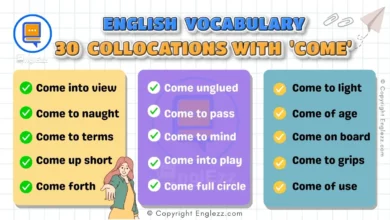English Structure
Teaching grammar can be a daunting task for many teachers, but it is essential to helping students become better communicators. There are several strategies that teachers can use to make teaching grammar more effective and engaging for their students.
The first step in teaching grammar is making sure that the teacher has a clear understanding of the material they need to teach. This means studying up on all of the rules and conventions associated with various parts of speech, sentence structure, punctuation, etc., so that they have an authoritative grasp on what needs to be taught in class. Once this groundwork has been established then it’s time for lesson planning! Depending upon grade level and student ability level there are multiple ways you could go about presenting your lessons; from using visuals such as diagrams or posters showing examples of different types grammatical structures or having activities like writing exercises where students practice forming sentences with specific elements included (i.e noun phrases). It’s important when doing these activities not only focus on accuracy but also creativity; encourage your learners explore language by experimenting within its boundaries while still following proper usage guidelines!
Finally after instruction comes assessment which should involve both formative (ongoing) assessments as well as summative ones at the end unit/topic/semester depending upon how long you plan out individual units ahead of time . Formatively assess through quizzes , tests , mini-projects throughout coursework while summatively assessing at endpoints gives an overall picture if student learning was successful based off pre-established standards set forth by curriculum goals & objectives . By taking into account both accuracy & creativity during instruction along w/ continual assessment throughout process will ensure solid foundation built towards mastering English language skills !
-

Master 30 Common Collocations with Come: for Fluent English
Learning collocations is a fantastic way to sound more natural and fluent in English. Collocations are word combinations that are frequently used together, and knowing them can greatly improve your speaking and writing abilities. The verb “come” forms many useful…
-

Top 30 Collocations with Pay: To Boost Your Vocabulary
Collocations are combinations of words that frequently occur together. Mastering collocations can significantly improve your English fluency and comprehension. In this blog post, we will explore 30 common collocations with the verb “pay.” Understanding these collocations will not only enhance…
-

Most Common 30 Collocations with Have: Essential Phrases for Fluent English
In the realm of English language learning, mastering collocations is a key component to achieving fluency. Collocations are combinations of words that frequently go together and sound natural to native speakers. Among the most common verbs in English is “have,”…
-

Master Collocations with Time: 30 Essential Phrases
Time is a fundamental concept that permeates our daily lives. Mastering collocations with the word “time” can significantly improve your English fluency and comprehension. In this blog post, we’ll explore 30 essential collocations with “time,” providing definitions, phonetic transcriptions, and…
-

Boost Your Vocabulary: Top 30 Collocations With Life Explained
Collocations are essential in mastering the English language, as they are combinations of words that frequently occur together. Understanding collocations can significantly enhance your fluency and comprehension, making your language use sound more natural and native-like. One of the most…
-

Enhance Your English: Top 30 Collocations with GET
Understanding collocations is crucial for achieving fluency in English. Collocations are pairs or groups of words that are commonly used together. Here are 30 essential collocations with “GET” that you need to know.Top 30 Collocations with GET 🚀Explore 30 essential…
-

30 Collocations With Love You Should Know
Collocations are words that frequently go together and sound natural to native speakers. They help enhance your English fluency. In this blog post, we will explore 30 common collocations with the word “love,” complete with definitions, phonetic transcriptions, and examples.…
-

30 Collocations with Break You Should Know
Collocations are pairs or groups of words that are often used together. Using collocations can make your English sound more natural. Here are 30 most common collocations with “break,” each with a definition, phonetic transcription, and examples.30 Most Common Collocations…
-

Understanding The Differences Between Sick and Sicken in English
Welcome to our ELT (English Language Teaching) blog! Today, we’re going to explore the nuances between two commonly confused words: “sick” and “sicken.” These words may seem similar at first glance, but they have distinct meanings and uses. By the…
-

Exploring Cultural Considerations in Teaching Pronunciation to Young Learners
In the diverse tapestry of today’s classrooms, where young learners from various cultural backgrounds come together to embark on a journey of language acquisition, the nuances of pronunciation instruction resonate profoundly. Understanding that language is not merely a set of…










